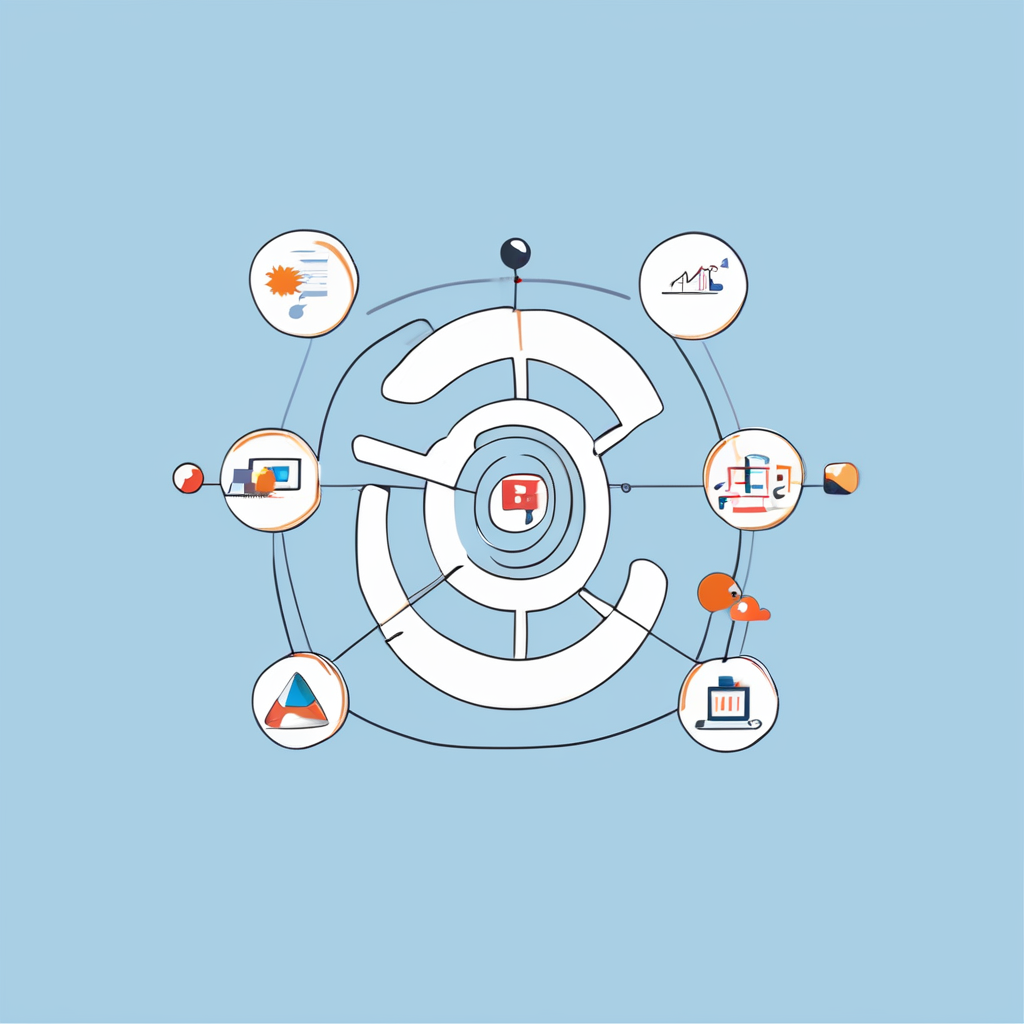Overview of Biometric Security Systems
Biometric authentication has evolved considerably over recent years, transforming the landscape of security technologies. Initially, this was only seen in high-security government installations. However, today, biometric systems have become ubiquitous, being integrated into smartphones, banking applications, and more. This evolution underscores the critical demand for identity verification that is both accurate and reliable.
The types of biometric security technologies available provide diverse methods for verifying identities. Common systems like fingerprint recognition have been used for decades, thanks to their reliability and cost-effectiveness. Facial recognition has gained popularity with advancements in camera technology, allowing for seamless user experiences with minimal intrusion. Iris scanning, though less common, offers a high level of precision and is often employed where top-tier security is needed.
Additional reading : Creating a cutting-edge ai-driven system for secure autonomous vehicle navigation: your comprehensive step-by-step handbook
The importance of accuracy and reliability in security cannot be overstated. As these technologies become increasingly integrated into daily life, ensuring they function correctly is paramount. Faulty readings can lead to false acceptances or rejections, undermining the system’s integrity. Thus, continuous improvements in biometric authentication are essential for building trust and enhancing security. The objective is to balance user convenience with robust identity verification, ensuring a seamless yet secure user experience.
Role of AI in Biometric Security
Artificial intelligence (AI) plays a pivotal role in enhancing biometric security systems. These systems rely on AI to efficiently process large volumes of data, ensuring quick and accurate recognition. AI achieves this by employing machine learning algorithms that improve over time, adapting to new patterns and anomalies. The self-learning capacity of these algorithms significantly impacts the accuracy of biometric recognition, allowing systems to identify individuals with a high success rate.
Also to read : Safeguarding your privacy: essential strategies for personal data protection in ai-enhanced health monitoring systems
In practical terms, AI helps streamline data analysis. For example, facial recognition technology utilises AI-powered algorithms to analyse and compare facial features rapidly. This ability to process complex data swiftly reduces error rates, making AI-driven biometric systems more reliable.
Furthermore, predictive analytics, a subset of AI, enhances threat detection and prevention in biometric security. By analysing trends and historical data, predictive analytics can anticipate potential security breaches, enabling preemptive action. This foresight is especially vital in high-security environments where prevention is paramount.
AI and its components, such as machine learning and predictive analytics, collectively bolster biometric security. They provide the tools needed to process data accurately, adaptively recognise users, and predict potential threats, transforming the landscape of security technology in a rapidly evolving digital world.
Latest Technologies Driving AI in Biometric Security
In today’s rapidly evolving technological landscape, innovation in biometric tech plays a crucial role in advancing security measures. These advanced authentication methods harness AI advancements to provide robust security solutions.
Deep Learning in Biometric Recognition
Deep learning stands at the forefront of biometric recognition. It revolutionises how we process and analyse real-time data. Compared to traditional algorithms, deep learning methods offer enhanced accuracy and reliability by adapting to new data patterns swiftly. Real-time analysis ensures that systems remain secure against emerging threats, providing a solid layer of protection.
Multi-modal Biometric Systems
Multi-modal biometric systems amplify security by integrating multiple biometric identifiers, such as fingerprints and facial recognition, into a single cohesive framework. This comprehensive approach offers extensive protection, making it ideal for varied environments. With practical applications in high-security areas, case studies demonstrate impressive effectiveness, showing a drastic reduction in identity-related threats.
Integration of AI in Existing Systems
Introducing AI into legacy biometric systems poses challenges; however, the benefits outweigh these hurdles. Techniques such as machine learning algorithms and neural networks are employed to bridge the gap. When comparing performance, AI-integrated systems exhibit superior functionality, responding adeptly to complex security needs. Solutions devised for integration ensure minimal disruption, thus fostering smooth transitions.
Real-World Applications of AI-Enhanced Biometric Security
Artificial Intelligence (AI) has revolutionised biometric security, bringing forth a variety of real-world applications. Let’s explore how this technology is implemented across different sectors.
In banking, AI-enhanced biometric applications provide robust security measures, protecting sensitive financial information. By recognising unique biometric data like fingerprints and facial features, these systems enhance user experience while securing transactions.
In the healthcare industry, biometric security implementations improve the accuracy of patient identification, enhancing service delivery and safeguarding personal health records. AI algorithms process vast amounts of data, ensuring patient privacy is maintained with minimal errors.
Travel is another area benefiting significantly from AI-enhanced biometrics. Airports employ facial recognition technologies to streamline passenger processing, resulting in faster security checks and improved passenger flow.
These case studies showcase the tangible benefits of biometrics. Success stories highlight how companies have witnessed an uptick in user acceptance and confidence due to increased security measures. Improved security fosters trust, leading to higher user engagement and satisfaction.
Feedback from users has been largely positive, with reports showing strong acceptance of biometric technologies across various sectors. The crucial factor facilitating this success is AI’s ability to deliver precise and efficient security solutions, catering to diverse industry needs.
Potential Challenges and Limitations
Navigating the realm of biometric security unveils several ethical and privacy issues. Concerns about how biometric data, such as fingerprints or facial recognition patterns, is collected, stored, and utilized are paramount. Data breaches pose a significant risk, potentially leading to identity theft or misuse. Addressing these privacy issues requires a regulated framework that emphasizes transparency and consent.
A notable technical limitation exists in biometric systems when operating in specific environments. For example, environments with low lighting or excessive noise can interfere with facial recognition and voice recognition systems, respectively. This makes accurate identification problematic, hence undermining the reliability of these systems in such conditions.
To bolster user trust and mitigate vulnerabilities, implementing comprehensive strategies is crucial. These include using robust encryption methods for data storage and transmission, regular system audits to identify potential weaknesses, and integrating multi-factor authentication systems. Such measures not only enhance security but also reassure users about the safety of their personal information.
Critically, fostering an environment of trust and security in biometric applications is essential. Informed consent and clear communication about data handling practices can contribute to wider acceptance, striking a balance between technological advancement and ethical responsibility.
Future Trends in Biometric Security
As technology strides forward, emerging trends in biometric security are reshaping our world. From future technologies to industry predictions, the innovations in this field are compelling.
AI and Biometrics in the IoT Landscape
The role of IoT (Internet of Things) in biometric security is critical. Interconnected devices heighten security potential, enabling real-time data analysis and threat detection. The future promises even deeper integrations, where biometrics support seamless connectivity and adaptability in myriad devices. However, these connections also necessitate stringent security measures to mitigate vulnerabilities.
Increasing Public Awareness and Acceptance
Trends in public perception are continually evolving. Educational initiatives play a pivotal role in boosting understanding, making consumers more comfortable with biometric technology. As knowledge grows, so does acceptance, steering consumer preferences towards devices that blend seamlessly into daily life. The landscape of user trust is ever-changing, demanding robust security assurances.
Regulatory and Compliance Considerations
The regulatory framework surrounding biometrics is not static. Current laws and forthcoming legislations indicate significant changes ahead. Compliance is indispensable in developing trustworthy systems that adhere to these evolving standards. Upcoming regulations will likely refine the landscape, ensuring both innovation and security progress hand in hand.










